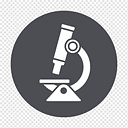GPT-4: Revolutionising the AI Industry and Sparking a Tech Industry Battle
The AI industry has been revolutionised with the release of OpenAI’s GPT-4, which is brighter, multi-modal, and has improved logical reasoning skills. This has sparked a battle in the tech industry between Google and Microsoft, both developing their own AI models to compete with GPT-4.
GPT-4 can recognise texts and images, solve image-based problems, and has achieved human-like levels of common sense in reasoning. Its deep learning capabilities have also been improved, leading to an increase in professionals’ task completion time by 50% and improving output quality by 20%. The GPT series has gone from the bottom 10 to the top 10 performance level on standardised tests like the bar exam.
In this article, we will explore the capabilities of GPT-4 and its impact on the AI industry.
The Evolution of the GPT Series
The GPT series is a family of AI models developed by OpenAI that uses deep learning algorithms to generate human-like text. The first model in this series, GPT-1, was released in 2018 and had 117 million parameters. Its successor, GPT-2, released in 2019, had 1.5 billion parameters and achieved state-of-the-art performance in various natural language processing (NLP) tasks.
GPT-3, released in 2020, took the industry by storm with its 175 billion parameters and ability to generate human-like text with minimal prompting. Its multi-modal capabilities allowed it to perform various tasks, including translation, summarisation, and writing code.
The release of GPT-4 in 2023 has taken the GPT series to the next level. With its enhanced logical reasoning skills and the ability to recognise and interpret images, GPT-4 has set a new benchmark for the industry.
Smarter and Multi-Modal
GPT-4 is more innovative and versatile than its predecessors. It can perform various tasks, including recognising and interpreting images, solving image-based problems, and generating human-like text. This multi-modal capability is a significant step forward for the AI industry, as it allows machines to understand and process information like humans do.
The ability to process images is a particularly significant development. Machines can now analyse and interpret visual data, opening up various healthcare, manufacturing, and agriculture applications. For example, devices could analyse medical images to identify early signs of disease or monitor crop growth to detect potential problems.
Improved Logical Reasoning Skills
GPT-4 has also improved its logical reasoning skills, achieving human-like common sense levels. This is a significant development, as machines can now understand the context and make inferences based on that understanding.
The ability to reason logically has wide-ranging applications. For example, machines could analyse financial data and make predictions based on that data. They could also evaluate legal cases and make recommendations based on previous rulings.
Increased Productivity and Quality
GPT-4’s improved capabilities have increased professionals’ task completion time by 50% and improved output quality by 20%. This is a significant development, as machines can perform tasks more efficiently and accurately than ever.
This improved productivity and quality will likely be felt across various industries. For example, in the healthcare industry, machines can analyse medical images and detect potential problems more accurately than humans. This could lead to earlier diagnosis and better patient outcomes.
AI Battle in the Tech Industry
The release of GPT-4 has sparked a battle in the tech industry between Google and Microsoft. Both companies are developing AI models to compete with GPT-4 with Google’s model.
Backlinks:
